Dogs are adorable with their cute wagging tails, playful nature, loyalty and endless energy. While having a session of zoomies every now and then is a good way for dogs to release pent-up energy, having an aggressive dog is no fun – for you or the dog. Aggression in dogs can occur due to a number of factors like poor training, anxiety, absent social skills and so much more. To treat aggressive behaviour in dogs, it’s vital to know the reasons, before learning tips and tricks to manage it. Here is some vital information about aggression in dogs, the types and ways to calm your four-legged furry friend.
What Is Dog Aggression?
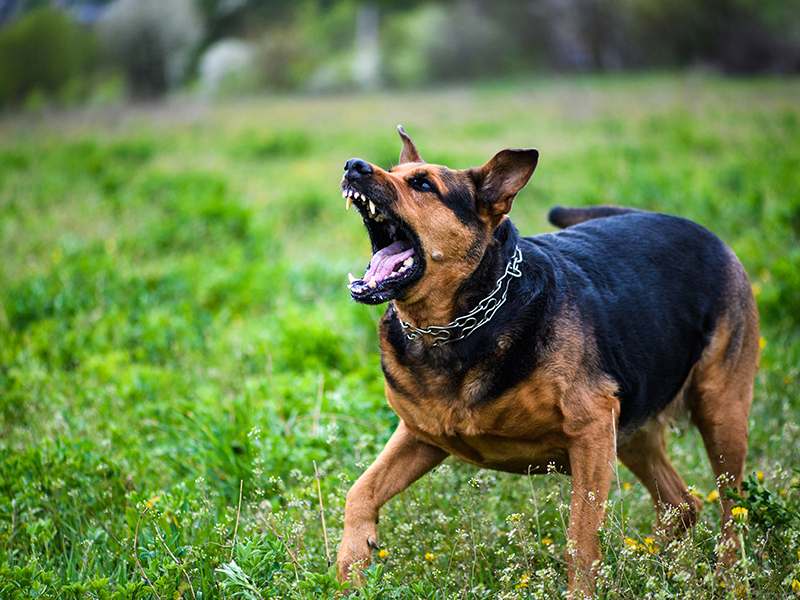
Dealing with dog behavioural issues is never easy. You may find it hard at first to diffuse the aggression in dogs. Well here is a careful outlook at dog aggression
- When someone says that their dog is aggressive, the first thing that strikes your mind is a dog that bites
- While aggression may be confined to instinctive behaviour in certain species, you should try and notice the things that trigger your dog
- This will help you understand aggression in dogs
- Though dog aggression is one of the most common behavioural problems, effective training can teach you how to calm dog
It’s very rare for dogs to get aggressive without a reason, to control the aggression in dogs you need to find out what makes it violent, in the first place. Take a look at the types of dog aggression that will give you a better perspective on how to calm a dog.
Types Of Aggression In Dogs
While a dog may be trying to establish its dominance on you by being aggressive on new family members, here are some daily life scenarios that can instigate your dog
1. Possessive Aggression
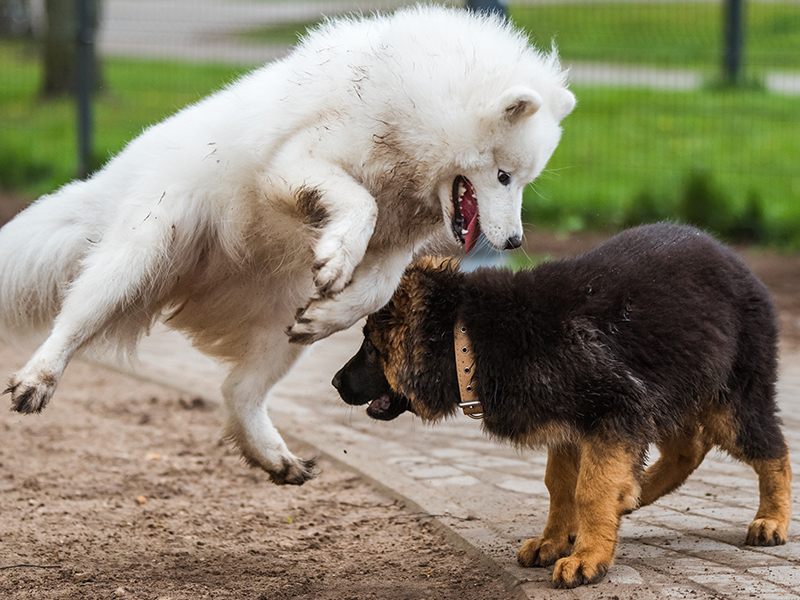
This type of behaviour is associated with resource guarding. It mainly comes into the picture when you try to intrude the dog’s territory by grabbing something that it is particularly possessive about. It can vary from its favourite toy to its food or its favourite space in the house or even when a stranger tries to get close to the dog’s favourite human.
2. Fear Aggression
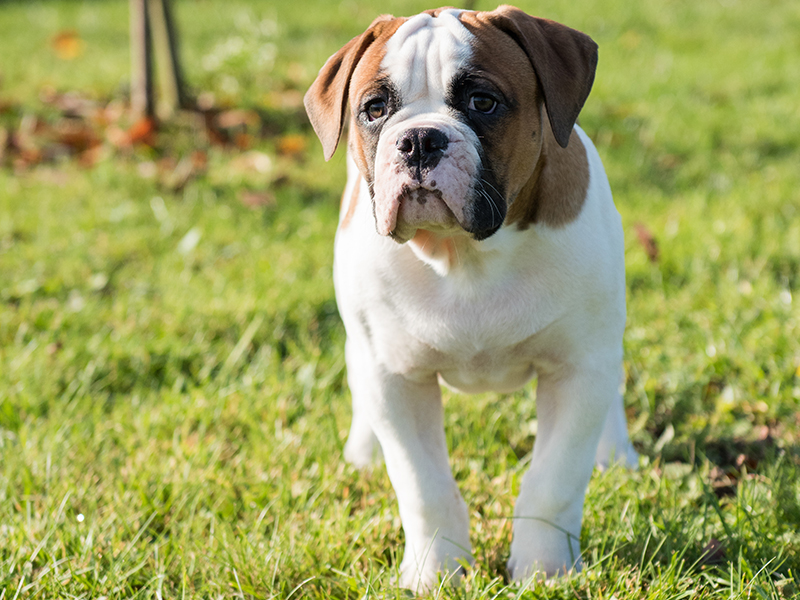
Fear is a powerful motivation for dogs as well. Under extremely scary situations, the dog may turn out to be anxious or aggressive. This type of behaviour is very rare for pet dogs and the owners mostly don’t have to deal with how to calm a dog down, in this situation. The dog will only react this way when it has no other option left.
3. Leash Aggression
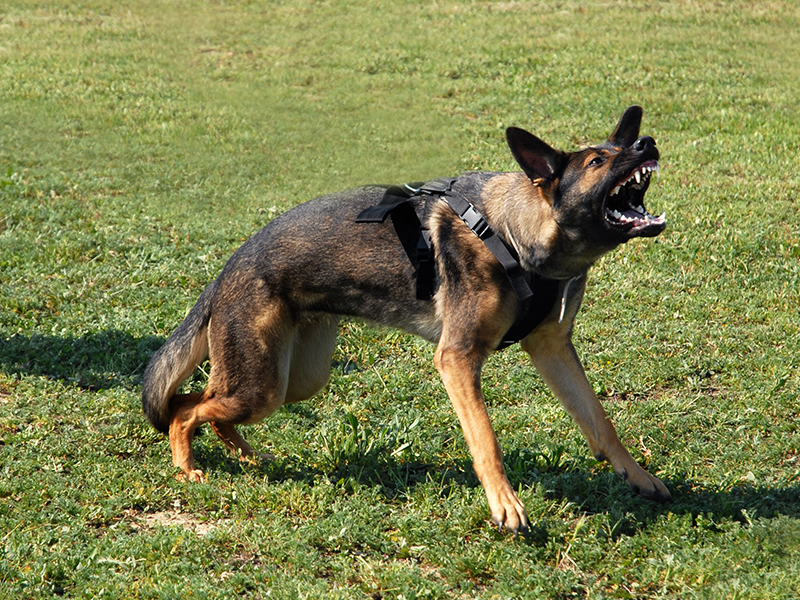
If your dog is calm during the entire day, but get’s aggressive when you put on a leash before going for a walk; it is a clear sign that your dog is not comfortable with the leash. It doesn’t like the idea of getting constrained. Try avoiding the leash if possible.
4. Pain Aggression
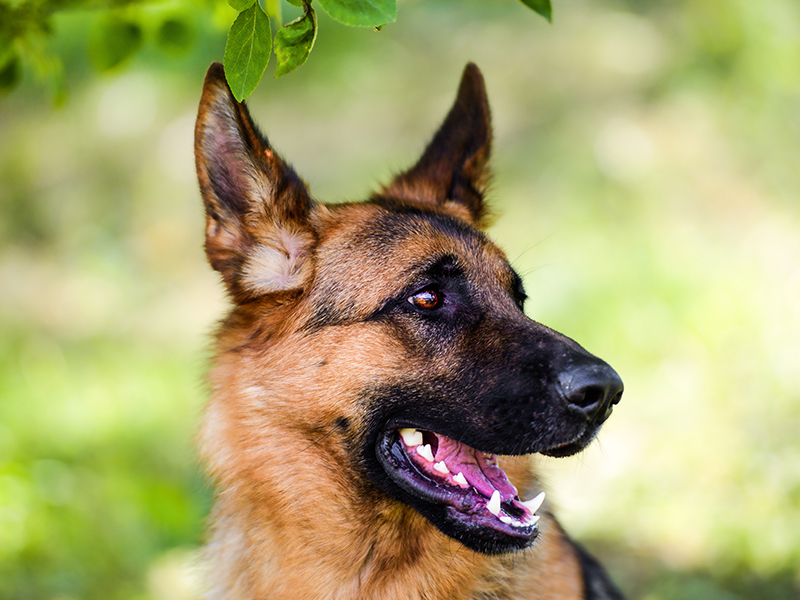
Dogs follow certain stereotypes and they are very good at hiding their pain. Though this is considered an aggression issue it is a defence mechanism at the core. There have been situations when injured dogs have tried to bite their owners. You may try to help your dog under the guise of concern but the ways on how to calm an anxious dog in this situation can be tricky.
5. Social Aggression
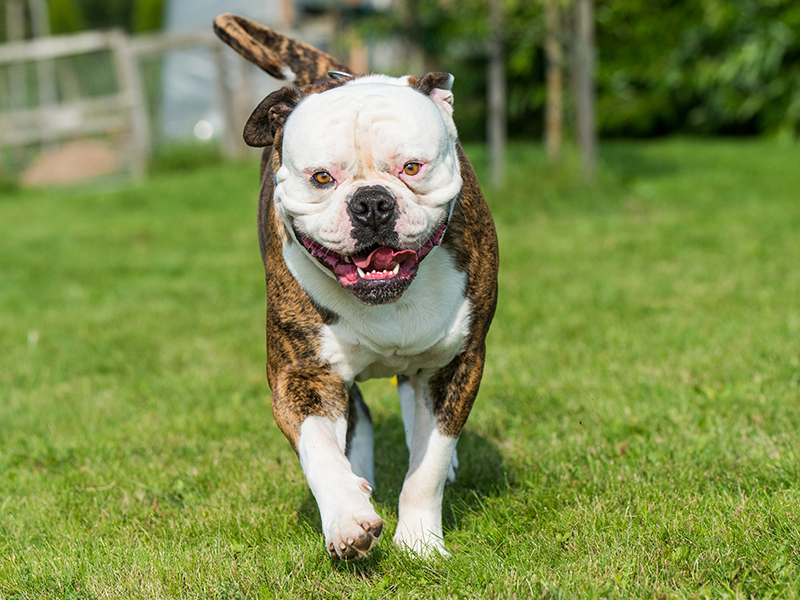
Just like human beings, dogs are social animals. This type of aggression may come in a picture in public places like parks. When your dog finds other animals or pets of the lower status in the hierarchy, it may get aggressive to prove its dominance. In such cases, proper training tips can help you calm the most aggressive dogs.
Can Dog Aggression Be Tangible To Their Breed?
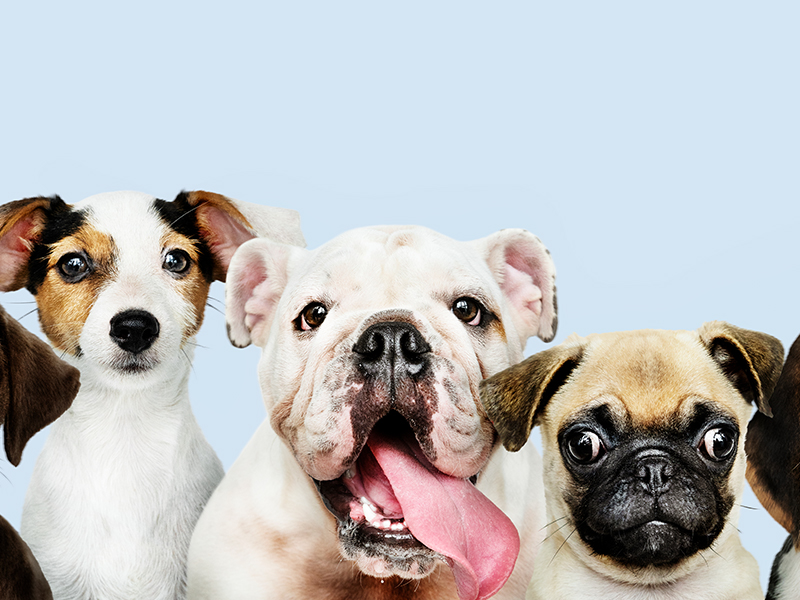
Now that you’ve had a look at the various types of aggression in dogs, let’s have a look at the most aggressive dogs
Well, there exists none. The whole idea of “most aggressive dogs breed” is a myth!
- Scientists and Veterinarians have proven time and again that even in the most dangerous dog breeds like Doberman, Pitbulls that are bloodthirsty and aggressive by the virtue of their breed, the age, biological nature, sex is what contributes to aggression in dogs
- Calculating a dog’s aggression based on its breed is irrelevant. You may come across a calm Doberman, and may also witness a poorly socialized passive-aggressive dog from an ideally calm breed. Thus, the aggression in dogs is not bound to their breed
Is Aggression Just A Phase?
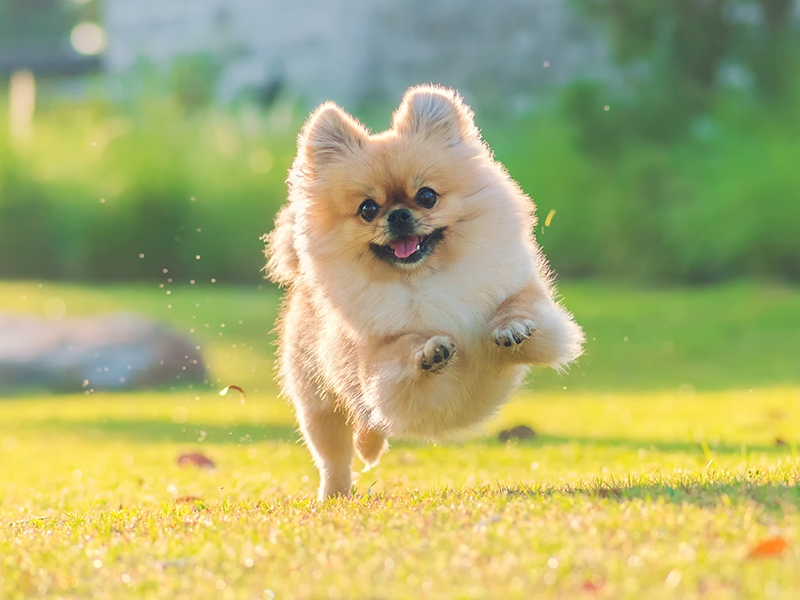
If your dog has started to become more aggressive lately, the chances are that aggression may go away with time. Becoming sexually mature is one of the `. In such cases the dog is more prone to get anxious and aggressive, good socializing, proper training can help you.
This is also applicable when you’ve adopted an adult dog. Your dog may take time to accept the new changes, in such cases all you have to do is deal with patience and wait for the phase to fade out.
How To Calm An Aggressive Dog?
While you’ve had a look at the various reasons behind aggression, here are some tips on how to calm an aggressive dog
1. Puppy Training

Usually, the dominant instincts in dogs are relevant from an early stage. If you tackle the problem right from the root, the repercussions will be minimised. Aggressive puppy biting is one of the very first signs. Start discouraging your dog’s dominant behaviour right away. These aggressive puppy bites may seem very basic at first, but if not discouraged they may implant a root for aggression that will go a long way.
2. Training Adult Dogs
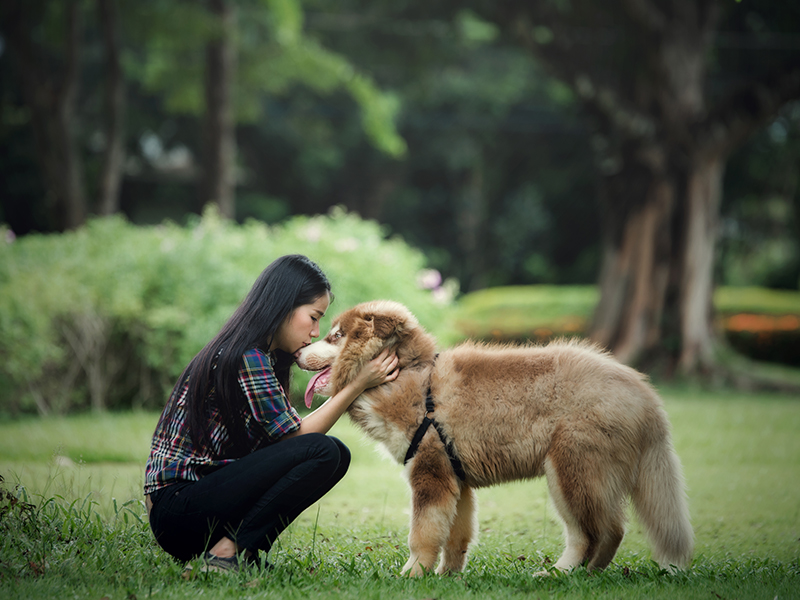
It’s never too late to discipline your dog. If you are a new pet parent to an adopted adult dog, try and enforce your orders on to the dog right from day one. When you take it out of the crate, make sure you release it where you want the dog’s play area to be. This will develop a habitual instinct in your dog. Though adult dogs may take more time, they will eventually learn to obey your orders and behave just the way you want.
3. Positive Reinforcement Training
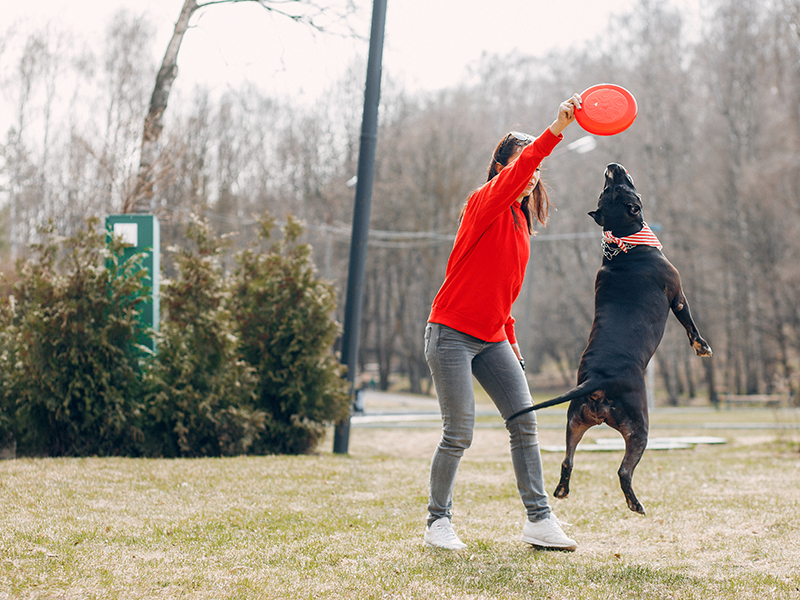
Training is the key to control aggression, while this training will teach your dog how to behave, here are some tips that will make the entire training process hassle-free.
- Try to reward your dog when they obey your instructions
- Pay attention to what triggers them and try to work on it with suitable rewards that may encourage your dog to overcome its aggressive phase
Playing and spending quality time with your dog can also help in reducing aggressive behaviour. Watch this video to learn about 3 fun dog workouts for your little one.
Key Takeaways

- Owning an aggressive dog may feel like a crisis at times, but relax
- You have to be the calm one here, you can’t deteriorate your dog’s aggression with anger, be considerate
- Once you figure out what triggers your dog the most, try to give it more exposure so that your dog gets habituated to it, don’t bully your breed
- In case of constant aggression try talking to your vet, seek professional help if needed
While there may be various types of aggressive dogs, the ultimate anecdote to all of them is only one, the owner’s empathy and love. Your love will come in handy when various techniques seem to fail, don’t forget it’s your dog, they can never harm you! It may be hard to witness behavioural changes but it’s your constant faith and encouragement that will help your dog.
You would never want any harm to come to these lovely babies, so why not learn about the animal protection laws? Watch this video to understand the animal welfare laws in India.

